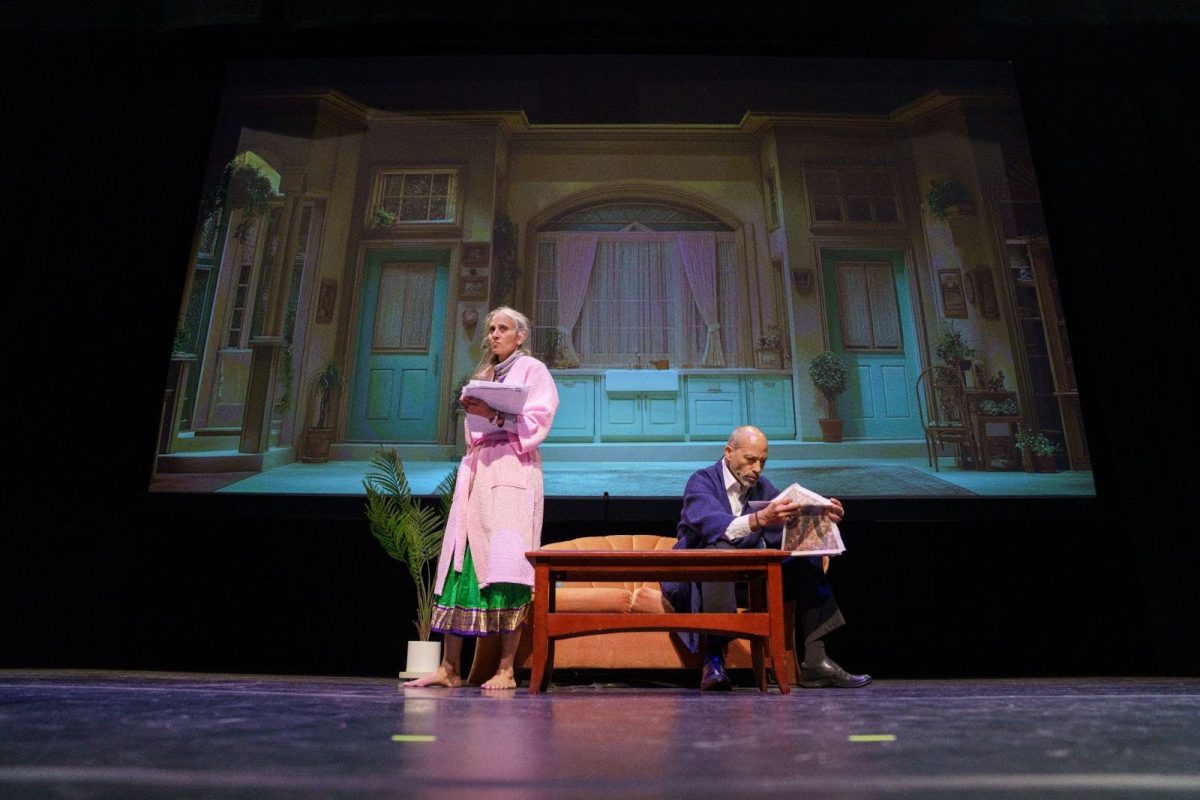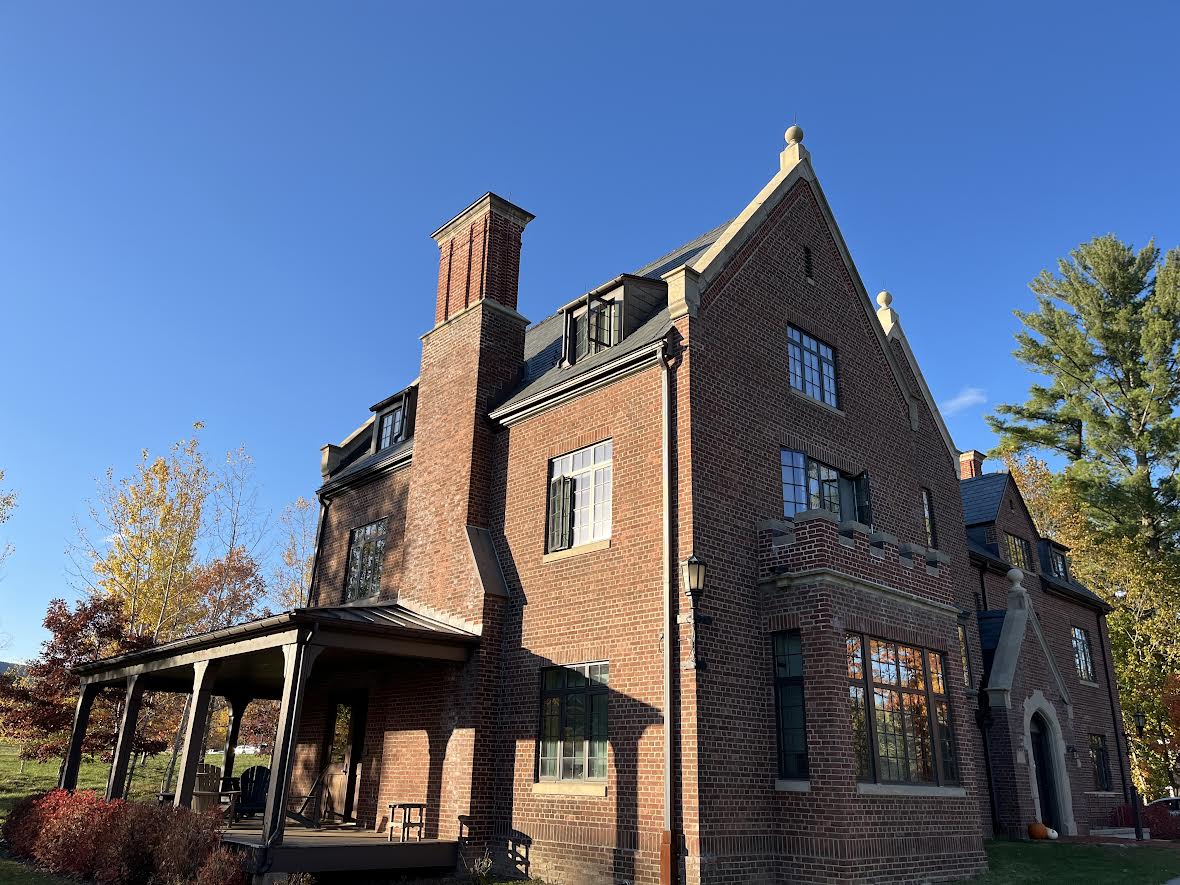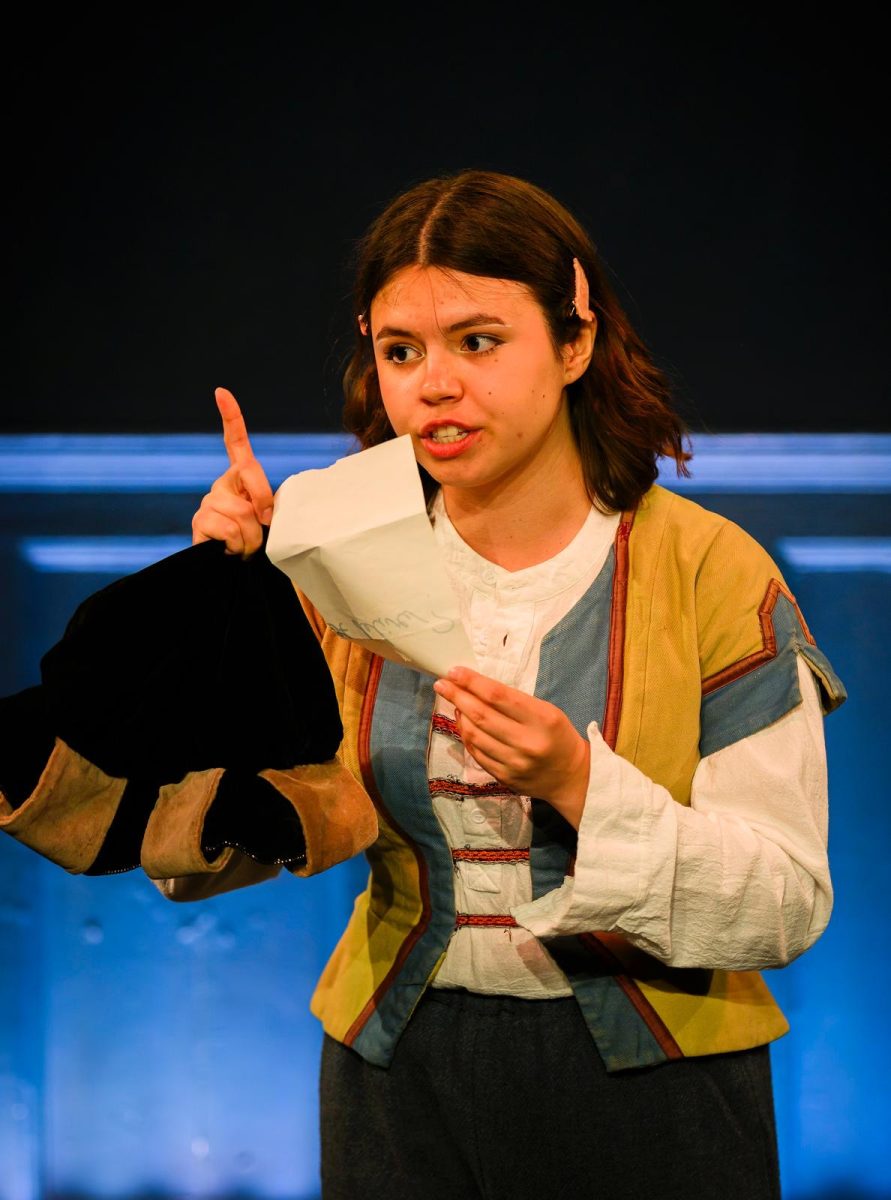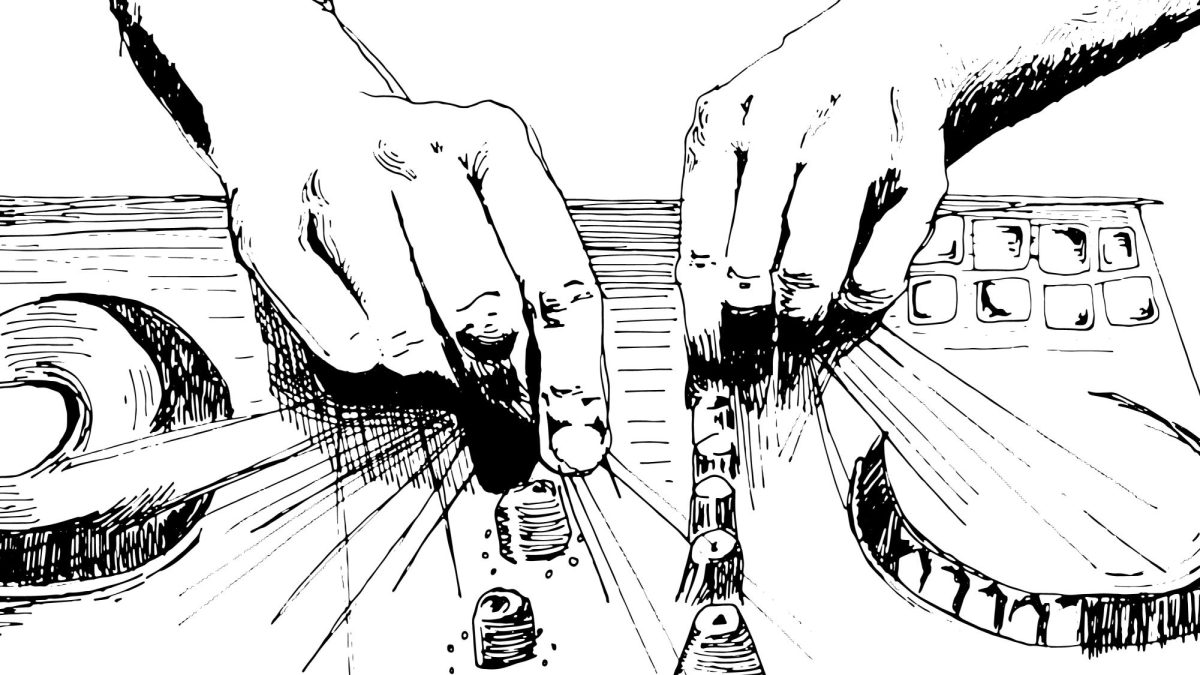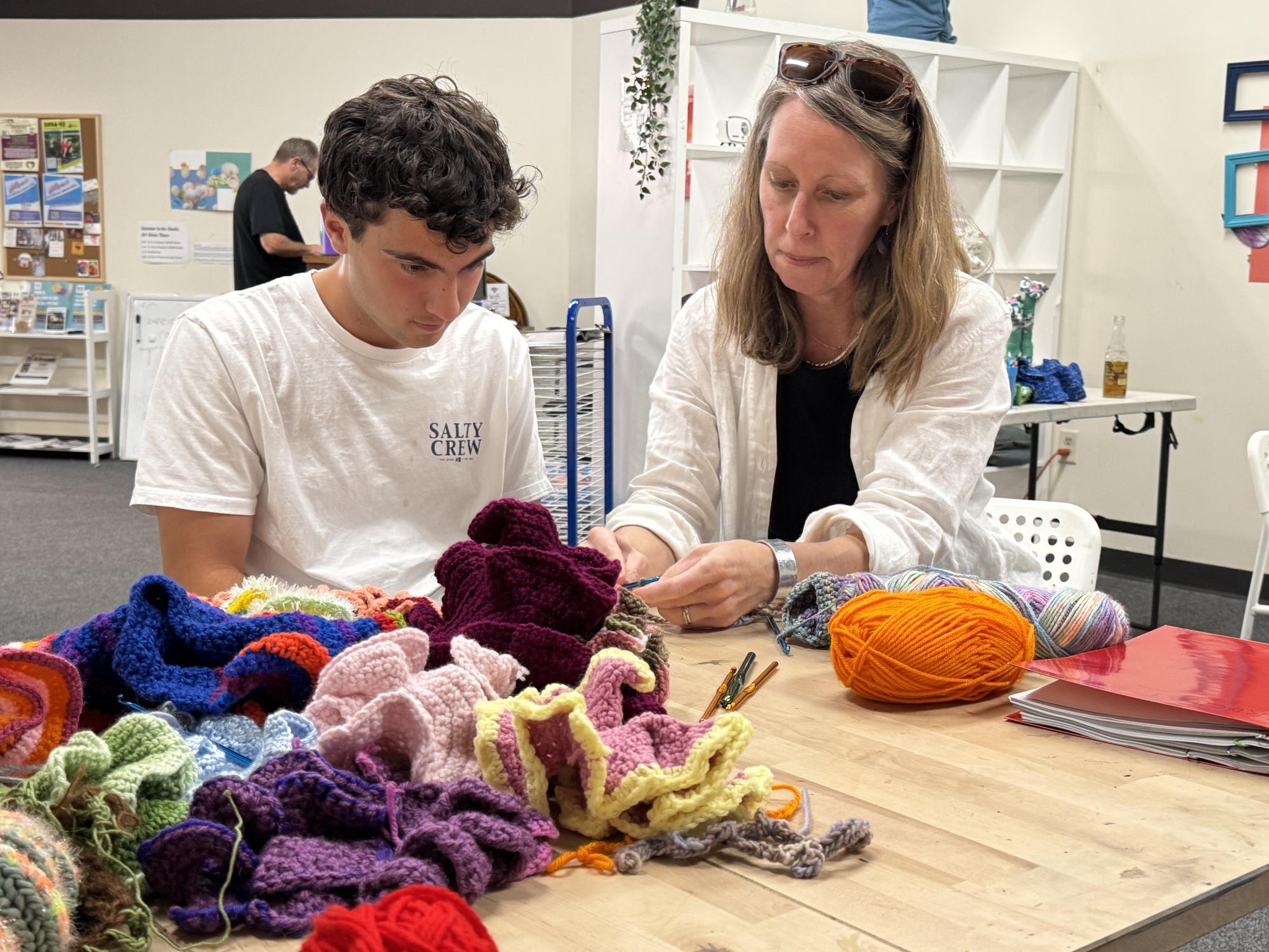
Though corals seem like the flowers of the underwater world, they are in fact animals — creatures that endure by living together in community. If you pass by the South Science Building’s ground floor, you might glimpse a colorful reminder of this sense of community right here on campus. The Williams College Museum of Art, the Zilkha Center, and the theatre department have collaborated to launch the Berkshire Satellite Reef Project, an initiative supported by the Gaudino Fund to crochet brightly-colored representations of coral reefs.
Each creation has a unique shape and color and represents the vibrant biodiversity of reefs, which are now under threat due to climate change. As ocean temperatures rise, corals are losing access to vital nutrients, causing them to dwindle in number due to starvation. The crochet reefs at the College use upcycled yarn from community donations.
The Berkshire Satellite Reef Project was inspired by the Crochet Coral Reef, a global community art initiative that raises awareness about the threats to coral reefs while celebrating the beauty of the marine ecosystem. Originally started in 2005 by Australian artists and sisters Christine and Margaret Wertheim, over 5,000 participants have added their own coral reef creations to the exhibition in the last 20 years. Their project has since been exhibited worldwide from the Getty Museum to the Venice Biennale.
The Satellite Reef project makes just one request of its participants: Donate your creations to the workshop. The pieces will be brought together for a large-scale immersive art exhibition in April, when Christine Wertheim herself will come to Williamstown to help assemble and organize the underwater experience.
Amy S. Holzapfel, chair and professor of theatre and a Gaudino Scholar, is the linchpin in bringing this project to the wider Berkshire community, including at the Berkshire Arts Center in Pittsfield, Bennington Senior Citizen Center, and the Williamstown Farmers Market. For Holzapfel, the collective creativity makes the project special. “They’re more beautiful the less perfect they are,” she said. “Everyone is an individual making their own coral, so there’s no right way to do this.”
Cross-departmental initiatives are associated with the project. On Monday, Tim Pusack, associate professor of marine ecology at Williams-Mystic, held a lecture on the importance of coral reefs. “They cover less than one percent of the ocean surface, and they’re just in the tropics, but [we should] gain more awareness about coral reefs, because actions here can potentially affect them,” Pusack said in an interview with the Record.
“What’s really cool about a lot of natural morphologies [in reefs] is that they have this mathematical background of repeating patterns over and over again, and it’s the same way that you crochet,” he added.
Since this summer, the workshops have brought over 200 people together, ranging from students and faculty to people unaffiliated with the College — some of whom drive several hours to participate.
Sally Neugarten ’26, who is the president of the College’s crochet club, Off the Hooks, said this project builds connections across differences. “It’s across age groups, across gender, ethnicity — everybody’s united by their wants and ability to crochet, to make something with their hands,” Neugarten told the Record. “It sparks a conversation. People have varying levels of knowledge about climate change, specifically coral reefs, but [it’s also] just garnering intrigue through a hobby or something that’s fun to do.”
Beyond the project’s main goal of raising awareness for the reefs, it is also an opportunity to learn to crochet. Holzapfel says this project is for everyone. “There are no barriers for entry in the project,” she said. “So [if] you don’t know how to crochet, you don’t have to have yarn or a hook. You just have to show up. That’s it.”
While many participants are looking forward to the spring exhibition, Holzapfel sees the proces as a large part of the art show. The project, she explained, is less about the number or the size of corals produced and more about building the reef as a community.
“People keep saying, ‘How big is it going to be?’ or ‘How many corals do you want?” Holzpfel said. “I have no idea. I think it will certainly be beautiful, because I already have bags [of crocheted corals].”
The reef has room for everyone. “No matter what you crochet, I guarantee you would find [a coral] that looks like it — just dive in and try,” Pusack said.
Interested participants can attend the crochet circles held at Milne Public Library each Friday. There will also be a crochet circle from 5:00 p.m. to 6:00 p.m. on Sundays in Upper Paresky hosted by the student club, Off the Hooks. Students, alums, and residents can also crochet corals and mail them to the College.



